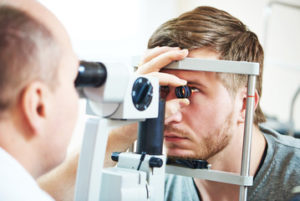 Monovision. The sound of the word might make you think that it’s a type of vision that involves using only one eye, not a particularly positive way to enjoy seeing. In truth, monovision is a popular method used by eye surgeons to optimize vision is both eyes — distance and near vision — following cataract or other eye surgeries.
Monovision. The sound of the word might make you think that it’s a type of vision that involves using only one eye, not a particularly positive way to enjoy seeing. In truth, monovision is a popular method used by eye surgeons to optimize vision is both eyes — distance and near vision — following cataract or other eye surgeries.
We use a different intraocular lens power for each eye, typically focusing the dominant eye for distance vision, such as when driving, and the non-dominant eye for things like reading and using your computer. The method can also be used during Lasik surgery and contact lens fittings.
Monovision for correcting presbyopia
As we age, somewhere around the age of 40, most of us begin to have some degree of presbyopia, the term used for difficulty focusing up close. And the condition gradually becomes worse over time. You may have presbyopia if you have difficulty seeing such things as:
- Cell phone keypad
- Cell phone texts
- Computer screen and keyboard
- Restaurant menu
- Words in a book
- Words in a magazine
- Package instructions
- Prescription medication bottles
If this gradual loss of up close vision is a problem or frustration for you, we can discuss options for improving this condition with monovision or other eye correction methods. Make an appointment today for an eye examination and treatment plan. Call 561.338.7722.
Monovision after laser cataract surgery
Cataracts are a clouding of the natural lens in the eye that can cause you to experience blurry vision. Laser cataract surgery can correct this condition, which can often interfere with daily activities and reduce your quality of life. At the time of your laser cataract surgery procedure, we can place an implant inside your eye based on your vision needs. Monovision may be an option at the time of your laser cataract surgery.
Monovision options: the goal is to maximize both distance and near vision
- Lasik eye surgery — perform a laser correction and allow dominant eye to see well for distance and non-dominate eye for near and intermediate vision
- Contact lens fitting with monovision
(You will likely still need reading glasses for very fine print.)


